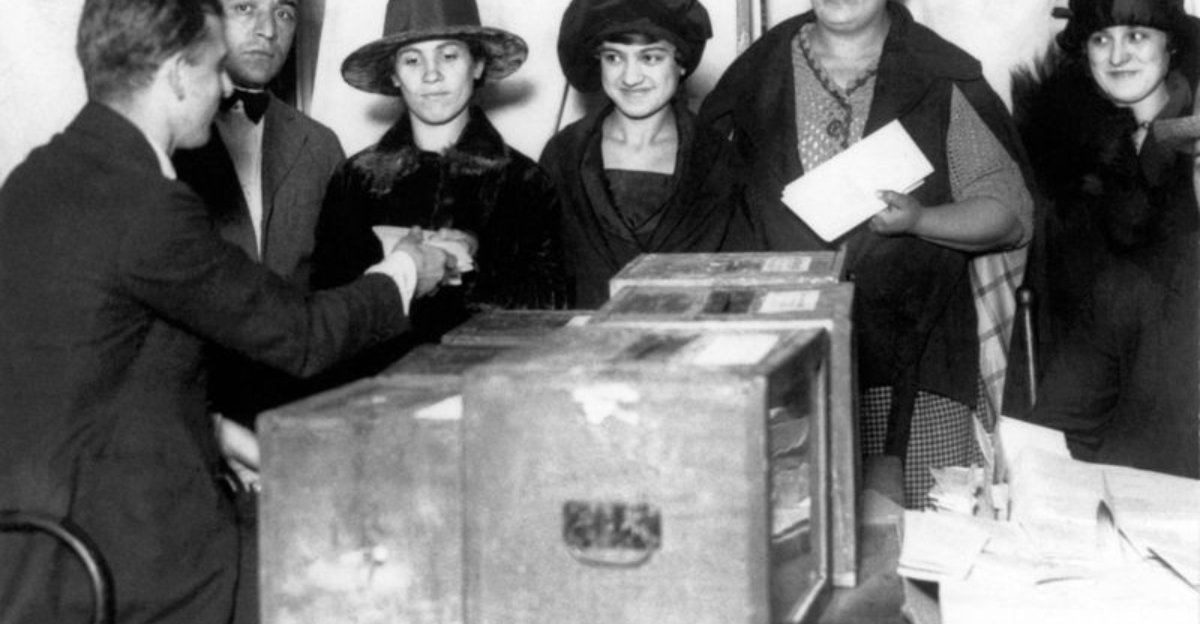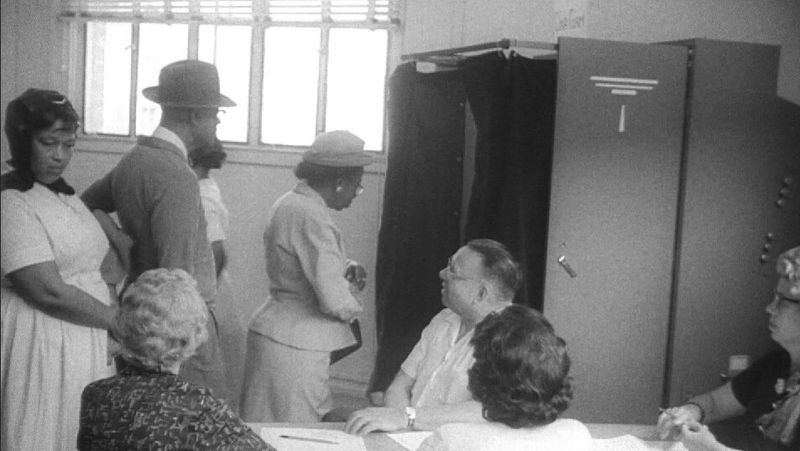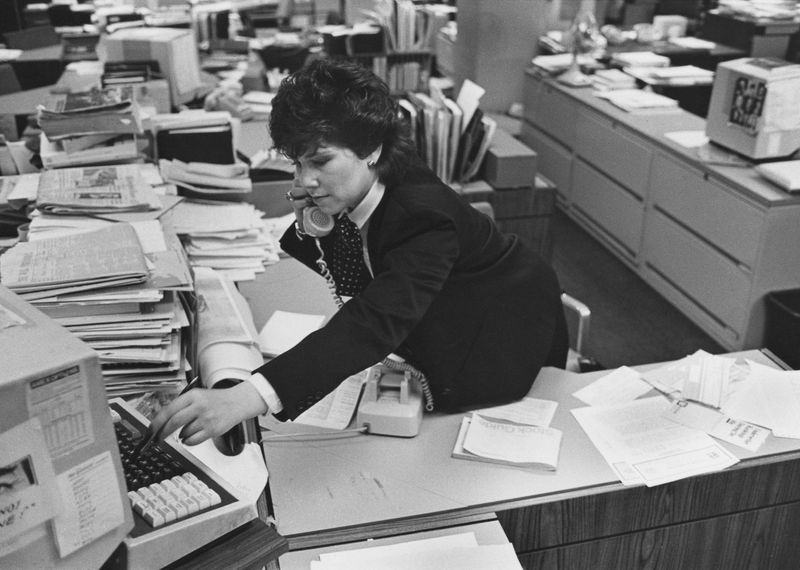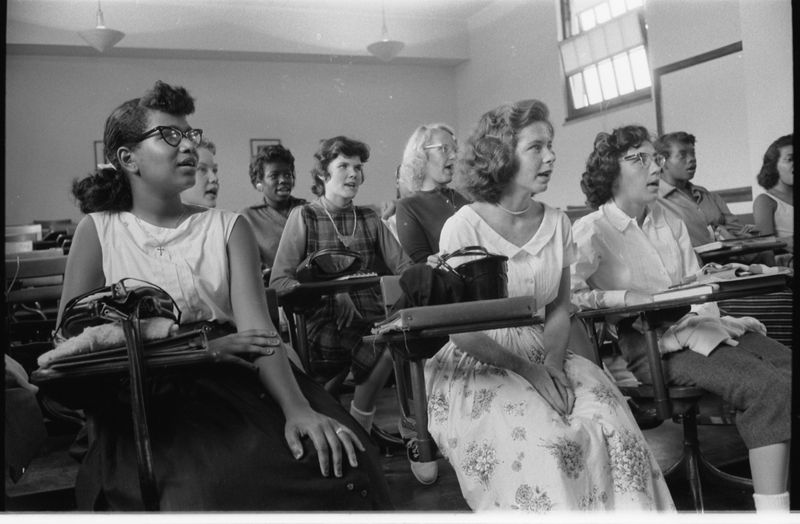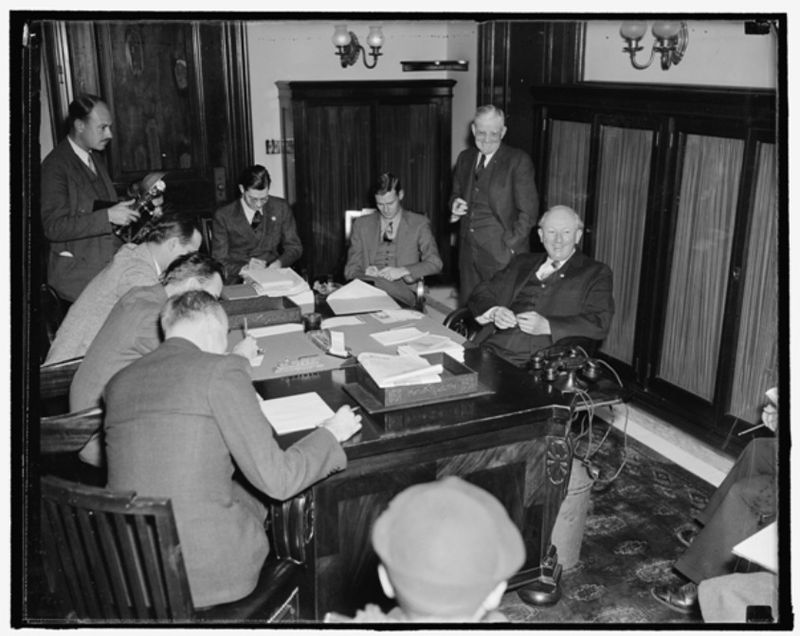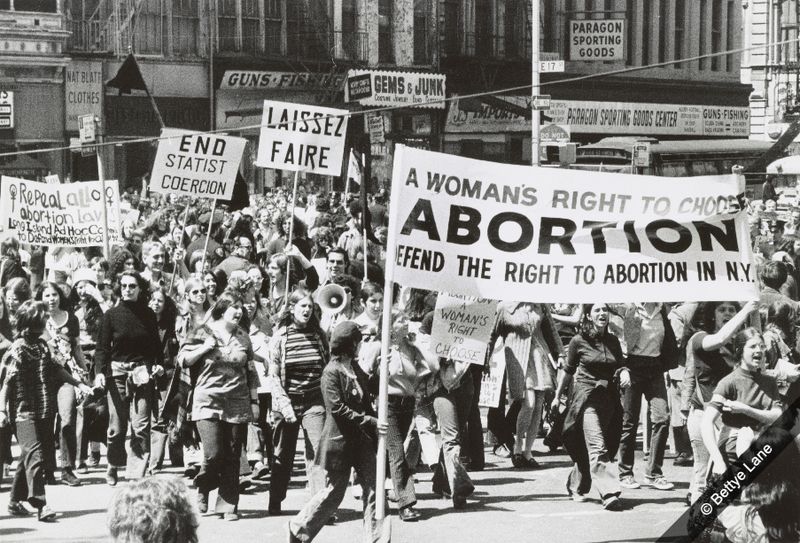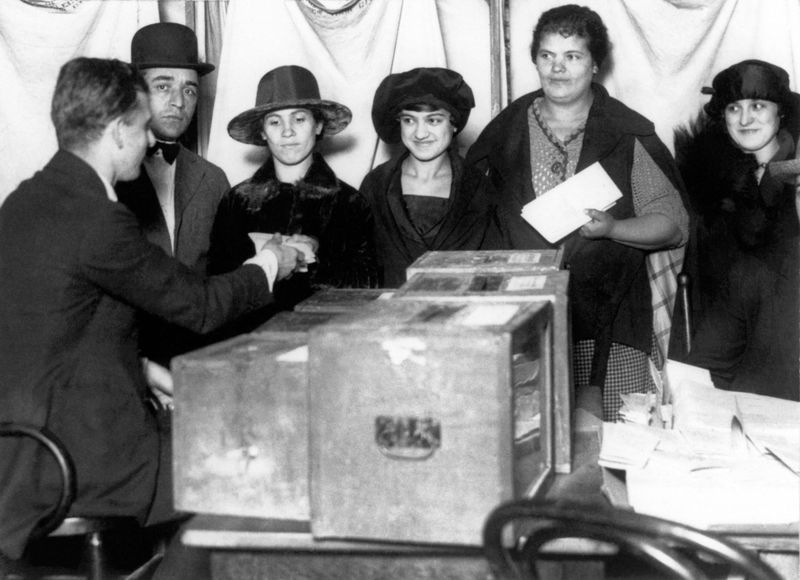The 1960s were a time when women’s rights were limited by societal norms and legal restrictions. Fast forward to today, and those limitations have been replaced with empowering rights and freedoms. This article explores five of those past restrictions and contrasts them with eleven modern rights that women can now enjoy. Celebrating the progress made, this piece highlights the journey from suppression to liberation, honoring the strides taken towards gender equality. With each point, we delve into the changes that have shaped women’s lives for the better, inviting reflection and appreciation for the transformations achieved.
1. Voting Restrictions
During the 1960s, while women had the legal right to vote, societal pressures and discriminatory practices often discouraged or hindered their participation in elections. Many women were made to feel that their political opinions were less valuable than those of men, a sentiment subtly reinforced by media and cultural norms at the time.
However, amidst these challenges, courageous women persisted, laying foundations for future generations. Their determination played a crucial role in increasing female voter turnout in subsequent decades, steadily shifting the political landscape towards greater inclusivity and representation.
2. Employment Discrimination
In the 1960s, women faced significant barriers in the workplace, often limited to specific roles deemed suitable for their gender. Promotions were rare, and equal pay was a distant dream for many. This era saw women confined to roles such as secretaries or teachers, regardless of their qualifications or aspirations.
Despite these constraints, many women persevered, challenging the status quo and advocating for workplace equality. Their efforts laid the groundwork for the comprehensive labor rights that women benefit from today, making strides toward gender parity in various professions and leadership roles.
3. Education Limitations
The educational landscape in the 1960s was not as welcoming to women as it is today. Many academic programs and institutions either excluded women or imposed significant barriers. Women were often steered towards ‘acceptable’ fields, such as home economics, rather than being encouraged to pursue their true academic interests.
This exclusionary culture did not deter many determined young women, who sought knowledge and broke through these educational barriers. Their pursuit of academic freedom contributed to the eventual expansion of educational opportunities, leading to the diverse and inclusive academic environments women thrive in today.
4. Financial Dependence
Financial independence was a significant challenge for women in the 1960s, as societal norms often dictated that they rely on male relatives or spouses for monetary support. Access to credit, loans, and even bank accounts was limited or entirely controlled by men, restricting women’s economic freedom.
Despite these limitations, many women began to question and challenge the financial norms of the time. Their advocacy for economic equality set the stage for modern financial rights, enabling women to manage their finances independently and equitably alongside their male counterparts.
5. Reproductive Control
In the 1960s, women’s reproductive rights were heavily regulated, with little autonomy over birth control decisions. Access to contraceptives was often controlled by medical and governmental authorities, reflecting a broader societal desire to dictate women’s reproductive choices.
This era of restriction was met with resistance from many women who demanded the right to control their own bodies. Their activism eventually led to increased access to reproductive healthcare, allowing women today to make informed decisions about their reproductive health without external constraints.
6. Right to Vote
Today, the right to vote is a celebrated freedom for women, embraced by diverse female voices across the globe. Unlike the 1960s, when societal pressures loomed large, today’s women are active participants in shaping political landscapes. Their votes hold power to drive change and influence policy.
This transformation from limited participation to active engagement highlights the progress made since mid-20th century. Empowered by their predecessors’ struggles, women today confidently exercise their voting rights, making significant impacts in elections and asserting their place in democratic processes.
7. Equal Employment Opportunities
The modern workplace has transformed significantly, offering equal employment opportunities across genders. Women today hold positions of power and influence, with many breaking through glass ceilings that once seemed unbreakable in the 1960s. This shift allows them to pursue careers that match their skills and aspirations.
Such progress owes much to the relentless advocacy and trailblazing efforts of women in past decades who demanded equality and fair treatment. The present-day professional environment continues to evolve, fostering a culture where talent and merit, rather than gender, determine professional successes.
8. Access to Education
Today, educational opportunities for women are vast and varied, a stark contrast to the limited access of the 1960s. Women now pursue advanced degrees in fields once dominated by men, thriving in careers rooted in science, technology, engineering, and mathematics (STEM).
This empowerment through education reflects decades of advocacy and reform, allowing women to follow their academic passions without societal constraints. It embodies a significant leap from past educational limitations, celebrating a world where women’s intellectual pursuits are encouraged and supported, leading to groundbreaking contributions in various fields.
9. Financial Independence
Financial independence for women today represents a significant shift from the dependency norms of the 1960s. Women now have equal access to financial tools and opportunities. They manage personal and professional finances with autonomy, contributing actively to economic landscapes.
This evolution is rooted in the tireless efforts of past generations who fought for gender equality in financial spheres. Their success paved the way for today’s women to confidently navigate economic decisions, ensuring financial security and independence without gender-based restrictions.
10. Reproductive Rights
Modern reproductive rights empower women to make informed choices about their bodies, a fundamental departure from the constraints of the 1960s. Today’s women have access to comprehensive healthcare options, including contraceptives and family planning resources, enabling personal autonomy over reproductive health.
This significant change reflects decades of advocacy and policy reform, ensuring women’s health and well-being are prioritized. By securing reproductive rights, women can focus on their personal and professional goals without external interference, embodying a key aspect of gender equality and empowerment in contemporary society.
11. Right to Own Property
The right to own property is a defining aspect of modern women’s independence, contrasting sharply with the restrictions of the 1960s. Today, women can freely invest in real estate, manage properties, and make substantial financial decisions regarding assets.
This right signifies a broader acceptance of women’s roles as equal participants in economic development. It reflects societal progress towards gender equality, empowering women to control their financial destiny and contribute significantly to economic activities, both locally and globally.
12. Maternity Leave Rights
Maternity leave rights today ensure that women can balance family and career without fear of discrimination, an achievement unthinkable in the 1960s workplace. Modern policies provide paid leave, job security, and flexible work arrangements, supporting women’s dual roles as mothers and professionals.
This advancement results from persistent advocacy for family-friendly workplace practices, acknowledging the importance of both parental responsibilities and career aspirations. Such rights allow women to nurture their families while maintaining career trajectories, representing a vital component of gender equality and workplace inclusivity.
13. Freedom of Expression
Freedom of expression stands out as a significant modern right empowering women to voice their opinions without fear of suppression. Unlike the 1960s, where societal norms often silenced women’s voices, today they articulate beliefs and ideas across various platforms.
This right reflects broader societal shifts towards recognizing and valuing women’s perspectives in public discourse. By embracing freedom of expression, women contribute to shaping cultural, political, and social narratives, ensuring diverse viewpoints are considered and respected in decision-making processes.
14. Equal Pay
Achieving equal pay for equal work is a defining victory for women today, addressing a significant disparity from the 1960s. Modern policies advocate for compensation based on merit and performance, ensuring that women receive fair wages alongside their male counterparts.
This progress results from continuous efforts to highlight gender-based wage gaps and demand equitable treatment. Ensuring equal pay not only enhances women’s economic standing but also symbolizes recognition of their contributions, fostering a more inclusive and balanced workforce.
15. Right to Participate in Sports
The right to participate in sports has become a celebrated freedom for women, far removed from the restrictive attitudes of the 1960s. Women now engage in a wide array of sports, from amateur leagues to professional arenas, showcasing talent and breaking records.
This right supports physical and mental well-being, promoting healthy lifestyles and camaraderie. It also highlights the importance of gender equality in athletics, inspiring future generations of female athletes to pursue their passions and thrive in competitive sports environments.
16. Safe Access to Healthcare
Today, women have safe and equitable access to healthcare, reflecting significant advancements from the limited medical rights of the 1960s. Modern healthcare systems prioritize women’s health needs, offering comprehensive services from preventative care to advanced medical treatments.
This access is crucial for maintaining overall health and well-being, empowering women to take proactive roles in managing their health. It underscores the ongoing commitment to gender equality in healthcare, ensuring that women receive the attention and care necessary for a healthy, fulfilling life.
